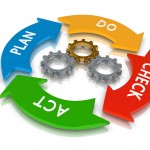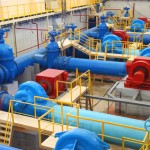Sustainability as a strategic asset
Why?
‘Zero impact’ does not exist. Human activities have always had an impact on the environment, since they involve the consumption of resources and energy. Over the centuries, industrial and technological development have dramatically improved our living standard and guaranteed us health, well being, protection from extreme events, food supply and boundless mobility. At which price. Our impact on the environment and climate has increased more and more, reaching today a level which is not sustainable anymore for our planet.
Governments around the world agree that there is an urgent need of a change in this trend. Many policies have been developed at national, European or international level aiming at the broad adoption of best practices which make our activities more sustainable.
Change is not easy though, because it requires us to change our habits as producers and as consumers too. But we need to act, and we need to do it quickly.
How?
The leaders of large and small organizations, building manufacturers and managers, representatives of public institutions, every day take decisions that determine the level of impact of our activities on the environment and climate.
Choose the bike, bus or train instead of going by car, buy local food products, ride a car at 90 km/h instead of 130 in the highway, replace an old refrigerator with a new class A+… These are only some examples of simple choices that make a big difference on our ‘impact’.
Where to start from?
The path for sustainability starts when we are aware of where we stand. By calculating the carbon footprint of our organization or products, for instance, we can understand which of our activities or products have the biggest impact on climate, and start thinking about how to improve things.
In lots of cases energy consumption is a primary factor in the balance of greenhouse gases, and its reduction can significantly decrease our carbon footprint while generating economic savings.
Performing an energy audit, adopting a energy management system, or installing an adequate monitoring system are very important steps. But energy consumption will never turn to zero. Once reduced, however, it will be much more easy and cheap to generate the same energy with renewable sources, by installing the most appropriate systems as for local conditions, sized according to the real needs, and built in a sustainable manner.
How much does it cost?
Sustainability does not have to be thought as a cost, but an an investment. The prices of goods and products often do not reflect their real cost, since they don’t include their life-cycle energy costs for instance. They almost never include their environmental ‘external costs’ occurring during their production, employment or disposal. The cost of an electric industrial motor, for example, is only 3% compared to the 100% of its life-cycle costs. The remaining 97% is the cost of its energy consumption. When we replace a boiler we should keep in mind how much fuel we will need to buy to make it work. The concept can be applied to any object: from electric or hybrid cars to buildings and their energy performance and so on.
Let’s get to the point.
Putting sustainability at the heart of our choices is a act of responsibility because we will succeed in fighting climate change if we all do something. But this is not the only reason to do it. It also saves money, it increases the quality of our activities improving its control processes, it improve the image of our company, it increases our political consensus. This is the challenge that is awaiting us.
How can Mr Energy help you?
We offer to be at your side if you need to understand better your needs, set up a strategy and identify the best and cheapest way to do reach your targets (consulting services). But we’ll remain with you also when you decide it’s time to act, providing our assistance in the design and realization of the systems that will turn sustainability strategy into concrete results (systems).






